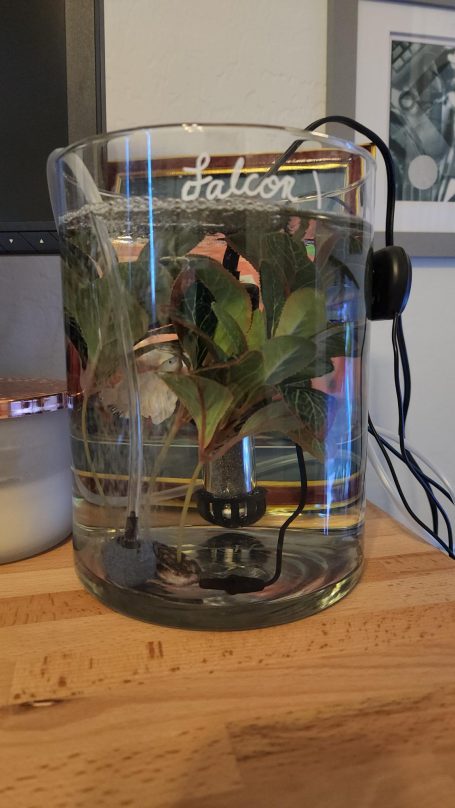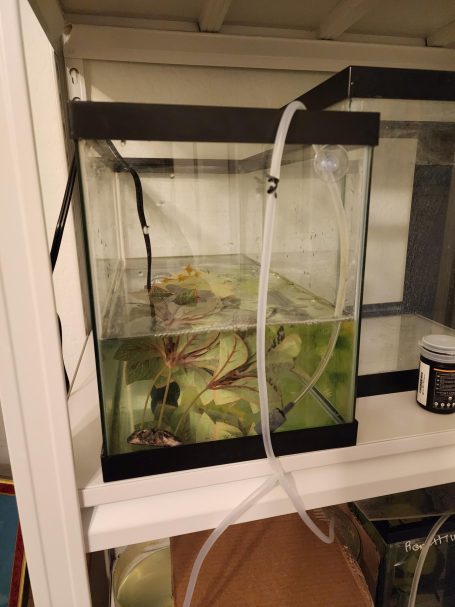COMMON BETTA DISEASES AND TREATMENTS
Betta diseases, their symptoms and causes, how to set up a hospital tank, and recommended treatments and medications.
Table of Contents:
- Betta fish Diseases (first half)
- How to Set Up a Hospital Tank (mid-page)
- Medications (bottom half)

Anchor Worms
Disease Type: Parasite
Symptoms: Worms are 0.8 inches long and visible to the naked eye. Appear on the base of the fish fins and can be white, green, or red. Other symptoms include rubbing, soreness, breathing difficulty, and lethargy.
Causes: New fish and plants (can transmit as larvae which aren't visible to the naked eye)
Contagious? Yes
Outlook: Positive if treated
Medical Treatment Options:
- Seachem Metroplex
- Fritz ParaCleanse
- API General Cure
- Fritz Coppersafe
- Seachem Polyguard
Notes: Additional information: https://badmanstropicalfish.com/anchor-worms-on-betta/

Bloat / Constipation / Egg Bound (Female)
Disease Type: Environmental
Symptoms: Swollen protruding belly on one or both sides. May have trouble swimming and may spend time at top or bottom of tank. Often fish will stop eating.
Causes: Most commonly constipation, which can be caused by over-feeding or eating something they shouldn't have like an algae wafer or betta bead, a poor-quality diet, or lack of exercise. can also be the case of a female being egg bound or "eggy", who needs help re-absorbing the eggs.
Contagious? No
Outlook: Positive if treated
Medical Treatment Options:
- Fasting for 4 days + 84 F for 4 days + 4 days of daily epsom salt bath (do not use salt for bloat, only for constipation or egg bound)
Use of betta mirror 5 mins/day - Feeding live or frozen food including daphnia, brine shrimp, or mosquito larvae to increase fiber
Notes: DO NOT feed peas. Unlike other freshwater fish, bettas cannot digest vegetation like peas so this will only increase bloat. This is a common misconception.

Body Slime
Disease Type: Parasite
Symptoms: Overproduction of mucus coating which appears as a grey/white to blue mucus coating. Rapid breathing. If slime covers gills, fish can suffocate. In some cases the fish will scratch against solid objects. Lowers immune system and can lead to secondary infections like fin rot.
Causes: Poor water quality, overcrowding, stress
Contagious? Yes
Outlook: Positive if treated
Medical Treatment Options:
- API General Cure
- Seachem Polyguard
- Saltwater Baths

Camallanus Red Worms
Disease Type: Internal Parasite
Symptoms: One or more small red worms coming out of the anal vent. Can look like a cluster of red threads sticking out. In advanced stage fish can look abnormally thin or have a swollen belly from the worms blocking the intestines, which can then cause secondary infections.
Causes: infection from water or another fish. Sometimes they can co-exist with the host for a long time unless the host has poor water quality, stress, tank aggression, and other things that can lower the fish's immune system.
Contagious? Yes
Outlook: Kills quickly if not treated.
Medical Treatment Options:
- Fritz Expel-P (will need 2 rounds, see notes)
Notes: Fritz Expel-P contains levamisole that paralyzes adult worms so they can be expelled from the fish and removed via a siphon. However, this does not affect unhatched eggs. Wait two weeks after initial treatment, and then dose the tank again to kill any remaining worms.

Clamped Fins
Disease Type: Environmental
Symptoms: Fins that are always closed or can appear to be stuck together or curling.
Causes: Poor water quality, cold water, small tank, overfeeding, shock, sometimes it's a sign of secondary disease or parasite.
Contagious? No, unless caused by underlying disease
Outlook: Positive if treated
Medical Treatment Options:
- Warm, clean, cycled water
- Exercise
- Appropriately sized tank
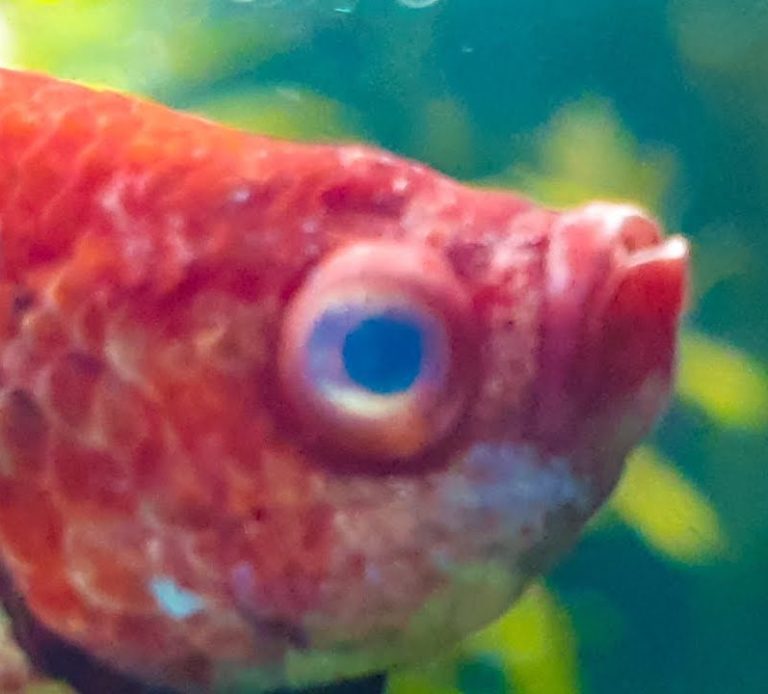
Cloudy Eye
Disease Type: Can be Environmental, Bacterial, or Internal Parasite
Symptoms: Gray or opaque film across fish's eye or eyes. Build-up of mucus in fish's body can happen as response to infection. May have problems swimming or finding food.
Causes: Internal parasites, cataracts, bacterial infection, nutritional deficiencies, poor water quality.
Contagious? Depends on the cause
Outlook: Positive if treated, can result in partial or full, temporary or permanent, blindness.
Medical Treatment Options:
- Seachem Kanaplex
- Seachem Polyguard
- API Fin and Body Cure
- API General Cure

Columnaris aka Cotton aka Saddle Back
Disease Type: Bacterial Infection
Symptoms: White patches on body (can sometimes look yellow or orange). Patches will be flat not bumpy or fluffy. Can eat away scales and skin of fish leaving red lesions. Can appear anywhere but most commonly it's a patch behind the dorsal fin . Can also start as mouth infection causing mouth or lips to look bleached. Gasping for air, less active.
Causes: Columnaris bacteria is in all aquariums. Fish with weakened immune systems are susceptible (can be genetic, caused by poor water quality, other infected fish, etc…)
Contagious? Yes, very
Outlook: Often fatal, can be solved if caught and treated early
Medical Treatment Options:
- Seachem Kanaplex followed by Fritz or Mardel Maracyn Two if Kanaplex doesn't heal it completely.
- Seachem Sulfaplex (can also be followed by Maracyn Two if this doesn't heal it completely)
Notes: Temporarily decreasing water temperature to below 75 degrees can also help meds be more effective.

Cyst / Ulcer
Disease Type: Bacterial Infection, sometimes parasitic
Symptoms: Fast growing growth that develops in a day or a week. Be sure that this is not a tumor or lymphocystis.
Causes: Bacteria. Fish with weakened immune systems are susceptible (can be genetic, caused by poor water quality, other infected fish, etc…). Sometimes an internal parasite can cause a cyst. If it has grown slowly over weeks or months, it is most likely a tumor (no treatment, just assess quality of life).
Contagious? Depends on tank mate immune systems.
Outlook: Can be fatal, especially if it bursts, can be solved if caught and treated early.
Medical Treatment Options:
- API General Cure (if internal parasite is suspected)
- API Polyguard (if external parasite is suspected)
- Fritz Expel-P (if internal nematode parasite is suspected)
- Maracyn Two
- Kanaplex

Dropsy / Pineconing
Disease Type: Viral or Bacterial
Symptoms: Extreme body swelling/bloat in stomach and pineconing of scales. Lack of appetite, lethargic, bottom-dwelling, darting to surface for oxygen, laying on side.
Causes: Virus, bacterial infection, or parasite. Indicates either severe bloat/constipation/blockage or internal organ failure/edema.
Contagious? It depends on the cause.
Outlook: Fatal 90% of the time even with treatment, very fast acting. Worth treating if caught early!
Medical Treatment Options:
- Fasting for 4-7 days, optional daily epsom salt baths
- Mardel or Fritz Maracyn Two Followed by Erythromycin (if needed)
- Seachem Kanaplex Followed by Maracyn Two
- Maracyn Oxy Followed by Maracyn Two
Notes: "Followed by Maracyn Two" is because this medication can typically only be purchased online so it takes time to ship. It is worth calling locally owned pet stores who sometimes carry this med. While you wait, you can dose with the other medications referenced, which are often easier to find at local fish stores or Amazon. If, however, you already have Maracyn Two, it's recommended to start with that medication as it is the most powerful for Dropsy.

Epistylis
Disease Type: Protozoan
Symptoms: Epistylis is not a true parasite, but an epibiont that attaches to the fish so it can feed on bacteria at the attachment site and in the water. Spots that stick out from the body in various rough shapes, often translucent gray or white. Patchy coverage on the body, common on the eyes. often kills rapidly. Make sure this isn't Ich/Ick!
Causes: Infection from another fish, water with a high bacteria count in it because of poor filtration, over feeding and/or poor aeration in the aquarium.
Contagious? Yes
Outlook: Recovery expected if treated quickly
Medical Treatment Options:
- Kanaplex (can be fed or treated in the water)
- Maracyn Two (can be fed or treated in the water)
- Seachem Polyguard
- Seachem Neoplex
- API Erythromycin
- Maracyn
Notes: Can easily be confused with Ich/Ick. Check symptoms carefully!

Fin Rot / Body Rot
Disease Type: Bacterial
Symptoms: Deteriorating fin and tail tips with black or red edges, sometimes black dots or pinholes.
Causes: Poor water quality, stress, weakened immune system, poor genetics. Most often a Gram Negative bacterial infection.
Contagious? No, unless other fish have weakened immune systems
Outlook: Recovery and fin re-growth expected if treated
Medical Treatment Options:
- API Fin and Body Cure
- Seachem Kanaplex
- Mardel or Fritz Maracyn Two
- Seachem Neoplex
- Seachem Paraguard
- API Erythromycin (try if a gram negative medication didn't help, also effective in hard to treat pinhole/black spot fin rot)
Notes: While warm clean water with indian almond leaf and salt baths can help, often fin rot requires an antibiotic. Water should always be tested to determine if poor water parameters such as high ammonia or nitrites are the cause.

Fish Lice
Disease Type: Parasite
Symptoms: You will see red sores on your fish and a round parasite attached to the skin.
Causes: Fish lice are a common parasite found in freshwater aquariums. They will attach themselves to the fish to feed on their body fluids. Fish lice are introduced by infected fish.
Contagious? Yes
Outlook: Positive if treated
Medical Treatment Options:
- API General Cure
- API Polyguard
- API Metroplex
- Fritz Coppersafe

Flatworm / Planaria
Disease Type: Parasite
Symptoms: There are two types of flatworms found in aquariums. Planaria have a distinct triangular head and two tiny black eyes and can get up to half an inch in size and be a real problem in shrimp tanks or in tanks with fish fry. A close relative, rhabdocoelas, has a round head, typically is quite small and is never a problem.
Causes: These small creatures live on the bottom of the tank, where they consume food and other particles that fall to the ground. As they feed, they become larger, which can make them more difficult for your betta to eat. In addition, if their population gets too high in the tank, they can lead to health issues and sickness in the fish. parasite.
Contagious? Yes
Outlook: Positive if treated
Medical Treatment Options:
- Methylene Blue
- API General Cure
- Fritz Coppersafe
- Seachem Paraguard

Flukes
Disease Type: Parasite
Symptoms: When your betta fish’s gills have been damaged, you will often see him struggling for air when he surfaces. Gills may appear to have a filmy coating or sores. Betta fish will frequently rub themselves against things in the aquarium. Flukes can also affect the eyes, making them cloudy.
Causes: Gill flukes are a parasite that attacks your fish’s gills and sometimes eyes. They are tiny, so this disease is hard to diagnose. Any dirty water conditions in your aquarium can cause gill flukes. Other fish or plants can also introduce them.
Contagious? Yes
Outlook: Recovery expected if treated
Medical Treatment Options:
- Methylene Blue
- API General Cure
- Fritz Coppersafe
- Seachem Paraguard

Fungal Infections
Disease Type: Fungal Infection
Symptoms: You will notice white patches on the head and body of your Betta. Please note that a bacterial infection will present as fuzz that appears woven and/or matted, whereas a fungal infection will be a fuzz with straight ends. If it appears matted or woven, please treat as a bacterial infection vs. a fungal infection.
Causes: Fish fungus is a common fungus found growing on betta fish that will eat their skin, fins, and body. It is a contagious disease. Fungal infections are prevalent in aquariums that are dirty and overcrowded. Stressed fish are more susceptible.
Contagious? Yes
Outlook: Recovery expected if treated
Medical Treatment Options:
- Seachem Kanaplex
- Seachem Polyguard
- API E.M. Erythromycin
- Mardel Maracyn
- Methylene Blue
- Malachite Green
- Mardel Maracyn Oxy
- Maracyn Two
- API General Cure
Notes: If there is any chance that a fungal infection is Columnaris, please refer to the recommended treatment for that disease as it is very fast moving and deadly.

Furunculosis / Open Red Sores
Disease Type: Bacterial
Symptoms: You will see red patches on your betta fish. More severe cases will present with red pus-filled sores. Betta fish suffering from furunculosis will become lethargic and will stop eating. Lumps on the skin can be a symptom of ulcers in betta fish. If the edges of the lump are reddened and sore looking, you're likely dealing with an ulcer. Fish with ulcers frequently appear listless and emaciated to the extent they stop eating altogether.
Causes: Furunculosis is a bacterial infection that is prevalent in aquarium fish. The bacterias Pseudomonas and Aeromonas are often found in aquariums that are not adequately maintained. When betta fish are stressed, they are more inclined to be affected by these bacteria. The bacteria will flourish when aquarium water is not balanced with proper testing.
Contagious? Yes
Outlook: Recovery expected if treated
Medical Treatment Options:
- API E.M. Erythromycin
- API General Cure
- Seachem Sulfaplex
- Seachem Paraguard

Gill Disease / Hyperplasia
Disease Type: Viral, Bacterial, Environmental
Symptoms: unnaturally red or swollen gills, partially open operculum, rapid or labored breathing. Unilaterial (one side) hyperplasia is often from injury, and can be permanent if scar tissue forms.
Causes: Multiple causes. Tumors, toxins, dirty water, secondary infection, etc…
Contagious? Not typically
Outlook: Recovery expected if treated
Medical Treatment Options:
- Mardel or Fritz Maracyn 2
- API Fin and Body Cure
- API E.M. Erythromycin
- Mardel Maracyn

Graphite Disease
Disease Type: Viral, Bacterial, Environmental
Symptoms: This is a disease only in blue or black (sometimes copper) bettas where the fins disintegrate and/or they get dark metallic grey patches on the body/fins. Some incorrectly state this is caused by Oodinium (Velvet) but this is not accurate. Graphite disease is relatively rare, and is most commonly actually a presentation of Columnaris. True graphite disease can be caused by a type of mycobateria which is untreatable and zoologic (can transmit to humans). Please see post on mycobacterium, coloquially known as "Fish TB" or "Fish Tuburculosis".
Causes: Mycobacterium
Contagious? Yes
Outlook: No known treatment. If this is true Graphite Disease, a form of mycobacterium, euthanasia is recommended.
Medical Treatment Options:
- There is no known treatment for Mycobacterium.

Hemorrhagic Septicemia
Disease Type: Viral or Bacterial
Symptoms: Septicemia often presents as reddening under the fish’s scales anywhere on the body. The redness may be localized in one area, or it can appear through the body. Sometimes, red areas are more visible around the fish’s face. Unfortunately, if you have a very dark-colored or red betta, it can be almost impossible to spot the discoloration. On injured fish, the sores or open wounds should appear pinkish-white in color and should heal quickly. A wound that has discoloration around it or is black, furry, or gray is probably infected, and the betta should be treated with antibiotic medication.
Causes: Septicemia is caused by the piscine novirhabdovirus, which was originally termed viral hemorrhagic septicemia virus, or VHS. The term sepsis, when used in reference to the condition in tropical aquarium fish, is also applicable to a secondary bacterial infection that causes blood poisoning. This is the most common variety of septicemia associated with pet fish that live in home aquariums.
Contagious? Yes
Outlook: Often fatal, recovery possible if treated early
Medical Treatment Options:
- API Fin and Body Cure
- API E.M. Erythromycin

Hole-in-the-Head Disease (Hexamita spp. + Spironucleus)
Disease Type: Parasite or Bacterial
Symptoms: Expert aquarists believe that it’s a parasitic infection. When the parasite eats the flesh around the head of your betta fish, deep, pitting wounds start to appear. However, scientific evidence is sparse and this could also be bacterial in nature.
Causes: Hexamita bacteria, vitamin deficiency from poor diet, poor water conditions, stress. Thought to be parasitic but no solid evidence backs this up.
Contagious? Yes
Outlook: Positive if treated
Medical Treatment Options:
- API General Cure
- Seachem Polyguard

Ich / Ick
Disease Type: Parasite
Symptoms: Small white dots on the body, fins, or gills resembling sugar granules. Rubbing against objects in aquarium. Uniform round size, pure white, flat against fish. Entire body will have dots, rarely on the eys, rarely kills. Make sure this isn't Epistylis!
Causes: Poor water quality, stress, introducing contagious tank mate.
Contagious? Yes
Outlook: Recovery expected if treated, fatal if left untreated
Medical Treatment Options:
- Seachem Polyguard
- Seachem Metroplex
- Seachem Paraguard
- Methylene Blue
- Malachite Green
- Fritz Coppersafe
- API Super Ick Cure

Internal Parasites
Disease Type: Parasite
Symptoms: Can cause difficulty breathing and swimming, erratic swimming, whirling (which can be "whirling disease" but not always). Long white stringy poop can also be a symptom.
Causes: Parasitic infection
Contagious? Yes
Outlook: Recovery expected if treated
Medical Treatment Options:
- Mix fresh raw garlic juice with food (allium in garlic kills internal parasites almost immediately). Follow up with one of these medications:
- API General Cure (if internal hexamita or cestode parasite is suspected)
- API Polyguard (if external parasite is suspected)
- Fritz Expel-P (if internal nematode parasite is suspected)
- Methylene Blue
- Fritz ParaCleanse
- Seachem Metroplex (if internal hexamita parasite is suspected

Lesions
Disease Type: Injury, virus, fungus, parasite
Symptoms: A lesion is a change in color or an opening in the skin or fins of a fish. The lesion may be on the skin surface only, or it may go deeper into the muscle or organs of the fish. Be sure that this is not a tumor or lymphocystis.
Causes: Lesions can be caused by many things. Injury, attack, bacteria, virus, fungus, parasites, etc…it's important to note what other symptoms your fish has to identify the cause and to accurately treat the lesions.
Contagious? Depends on the cause
Outlook: Recovery expected if treated
Medical Treatment Options:
- If bacterial, use an antibiotic such as Seachem Kanaplex, Maracyn Two, or
- API Fin and body cure
- If Fungal, Seachem Kanaplex, Maracyn Oxy, Seachem Focus, Seachem Sulfaplex
- If parasitic, API General Cure, Seachem Polyguard, or Seachem Metroplex
- If unsure, API General Cure of Seachem Polyguard (treats bacterial, fungal, and parasitic infections)

Mouth Rot / Mouth Fungus
Disease Type: Fungal or Bacterial Infection
Symptoms: Even though it is called “mouth fungus,” it is actually a bacterial infection that needs to be treated with antibiotics or other medicines that kill bacteria. Most of the time, mouth fungus is found in the head, but not always in the mouth. It could also affect the face, gills, and jaws. It can also affect the body and fins less often, so it’s easy to mistake it for fin rot. But the short tufts that show up when someone has a mouth fungus are unique. True fungal infections are similar to mouth fungus infections, but fungal infections usually look like tufts of long, white, fluffy threads, while mouth fungus infections usually look off-white to grey. Some aquarists call mouth fungus “cotton wool disease,” which is confusing because true fungal infections don’t look like cotton. Mouth fungus that has gotten worse can also cause sores and lesions on the head and along the sides of the body.
Causes: Injury that allows the bacteria to get in, lowered immune system, other infected fish, poor water quality conditions, etc…
Contagious? Yes
Outlook: Recovery expected if treated
Medical Treatment Options:
- Seachem Polyguard
- API General Cure
- Seachem Neoplex

Popeye
Disease Type: Viral or Bacterial, sometimes parasitic.
Symptoms: You can quickly diagnose popeye from the swollen appearance or redness of the fish’s eye or eyes. Fish may become lethargic.
Causes: Popeye is when a fish has one eye or both that are bulging. Blindness or partial blindness can occur if this condition is not treated correctly. Popeye can be caused by infection, injury, or poor aquarium conditionsm, and even from an internal parasite. Injury can happen when betta fish are fighting among themselves. Unilateral (one-side) popeye is typically from injury/attack.
Contagious? Yes if other fish have weakened immune systems
Outlook: Recovery expected if treated
Medical Treatment Options:
- Seachem Kanaplex
- Mardel or Fritz Maracyn two
- Mardel Maracyn
- Seachem Neoplex
- API General Cure or Seachem Metroplex (if internal parasite is suspected)
- Seachem Polyguard (if external parasite is suspected)
- (API E.M. Erythromycin can be a good follow-up medication to Kanaplex if Kanaplex alone doesn't resolve the issue)

Secondary & Internal Infections
Disease Type: Viral or Bacterial
Symptoms: One of the noticeable signs of an internal bacterial infection is lethargy. Swim bladder disorder and dropsy can also occur. The betta may sit around a lot and flop to one side when perched on a leaf. It may also have difficulty swimming or may not eat as much. General reactions to the illness will also occur, such as a loss of color and clamped fins. You may notice a cloudy slime falling from the fish, or the betta may be covered in a slimy white layer if it is having problems with its slime coat. If the skin has a bacterial infection, white patches or blotchy sores can appear on the fish’s body.
Causes: A bacterial infection can occur if there’s an overwhelming amount of bacteria in the betta’s aquarium or if the fish is in a high state of vulnerability (that is, if it has a very low immune system). It can also occur if there’s a foreign toxin or chemicals in the water.
Contagious? It can be, depends on the cause
Outlook: Recover expected if treated
Medical Treatment Options:
- Seachem Paraguard
- Mardel or Fritz Maracyn 2
- API E.M. Erythromycin (this is a good follow-up med if a broad spectrum antibiotic doesn't help)

Swim Bladder Infection
Disease Type: Can be bacterial, parasitic, overfeeding, or constipation
Symptoms: Hallmark is involuntary sinking or floating, along with swollen belly, s-shaped curved spine. Inability to remain upright, stuck at surface or sinking to the bottom, loss of appetite
Causes: Usually gastrointestinal problems, overfeeding, constipation, parasite activity, birth defect, egg-binding in female fish, physical trauma, shock.
Contagious? Not unless parasitic
Outlook: Recovery expected if treated
Medical Treatments:
- Warm clean water
- Fasting up to 4 days
- Salt bath to get digestion moving
- Maracyn Two
- (Kanaplex can be a good medication to try while you wait for Maracyn Two to ship)
- (API E.M. Erythromycin can be a good follow-up medication if Maracyn Two alone doesn't resolve the issue)

Tapeworm
Disease Type: Parasite
Symptoms: Parasites can cause a variety of symptoms in bettas, including lethargy, loss of appetite, skin lesions, and behavioral changes. Look for white spots, redness or inflammation around the gills, body deformities, and ulcers. You can also perform a “float test” to see if there are any parasites in the water.
Causes: Parasites can be contracted in a variety of ways, including eating infected food, coming into contact with contaminated water, or being bitten by an infected bug. Some parasites can also be transmitted from one fish to another.
Contagious? Yes
Outlook: Recovery expected if treated
Medical Treatment Options:
- Mix fresh raw garlic juice with food (allium in garlic kills internal parasites almost immediately). Should be followed up with one of these medications:
- Fritz Paracleanse
- API General Cure
- Seachem Metroplex

Tubellarians
Disease Type: Parasite
Symptoms: Tiny raised black dots on your fish's body.The distinctive black spots of this disease are around the size of a grain of salt. The spots can be anywhere on the fish's body. Other symptoms include rubbing or scratching, lethargy, faded color, and loss of appetite.
Causes: Black spot disease is caused by a parasite. Black spot disease is also referred to as tang disease or black ich, although ich is actually caused by a different type of parasite. As the name suggests, the primary symptom of the infestation is tiny raised black dots on your fish's body. The black spots on the fish are tiny Turbellaria flatworms.
Contagious? Yes
Outlook: Recovery expected if treated
Medical Treatment Options:
- Seachem Polyguard
- Seachem Paraguard
- Methylene Blue
- Malachite Green
- API Super Ick Cure
- Seachem Metroplex
- Fritz Coopersafe

Fish Tuburculosis aka Fishkeepers Disease aka Mycobacterium
Disease Type: Bacterial
Symptoms: You can spot tuberculosis in your betta if they have a curved spine, skin defects, pine coning, sluggish movements, and eye damage. It will often infect your betta when he’s stressed, his diet is bad, or in poor water conditions. When you notice your betta has tuberculosis, you should start treatment ASAP.
Causes: Mycobacterium infection from another infected fish
Contagious? Yes also contagious to humans!
Outlook: No known recovery or treatment. Euthanasia recommended.
Medical Treatment Options:
- Unfortunately, there is no real way to treat betta tuberculosis. Some people believe if you can dose a tank with antibiotics, or clean any wounds with penicillin then there’s a chance that your betta might survive. However, this is going to be extremely hard for a standard fish keeper and normally requires a vet.
Notes: CAUTION!! This disease is contagious to humans! Use gloves when touching anything in the tank, disinfect everything with bleach. Euthanasia recommended. Also, swim bladder can also cause a curved spine, and dropsy can cause pine coning, so carefully treat for these conditions to see if this alleviates symptoms.

Velvet / Oodinium
Disease Type: Parasite
Symptoms: Betta fish with velvet will lose their color or develop a yellowish coating.
Causes: Parasitic infection causes betta velvet in betta fish. These parasites infect the betta fish and start to eat their flesh. The Oödinium parasite lives on decorations or plants that are in your aquarium. It is an alga that presents a significant risk to your betta fish, and they will attach to your betta fish to feed.
Contagious? Yes
Outlook: Recover expected if treated
Medical Treatment Options:
- Seachem Polyguard
- Methylene Blue
- API General Cure
- Seachem Metroplex
- Fritz Coppersafe
- Seachem Paraguard

Wasting Disease
Disease Type: Parasite
Symptoms: Emaciation, anemia, lethargy. Tissue damage leading to subsequent ulcertaion of the gastrointestinal tract. Excess mucus and white stringy feces are often produced.
Causes: Transmitted from infected fish
Contagious? Yes
Outlook: Recovery expected if treated.
Medical Treatment Options:
- API General Cure
- Seachem Metroplex

Whirling Disease
Disease Type: Parasite
Symptoms: "Whirling Disease" gets its name from the radical tail-chasing swimming behavior of heavily and often fatally infected fish. Clinical signs result from the presence of the parasite spores in the cartilage, causing inflammatory changes and pressure on spinal nerves. However, fish may become infected with the parasite and never show clinical signs; resulting in a difficult positive diagnosis of infection in these fish.
Causes: Parasitic infection.
Contagious? Yes
Outlook: Fatal
Medical Treatment Options:
- There are no medical treatments for this disease
Notes: Other internal parasites can also cause whirling symptoms without being this particular parasite! It's still worth following the treatment plan for other internal parasites to see if this resolves the symptoms.
HOW TO SET UP A HOSPITAL TANK
Most of the time it is highly recommended to treat a betta fish in a hospital tank as many medications can crash your cycle and aren't safe for plants and tank mates. A hospital tank should contain the following:
- Minimum 1 gallon, though 5 gallons is better. Can be glass, acrylic, or BPA free plastic (in emergency situations).
- If fish is struggling to surface for air, fill hospital tank halfway (if bigger than 1 gallon).
- No substrate
- Heater
- Air stone (baffled so flow isn't too strong)
- Thermometer to monitor temperature
- At least 1 silk plant or hide
- Something to rest on near the surface.
BETTA FISH MEDICAL TREATMENTS
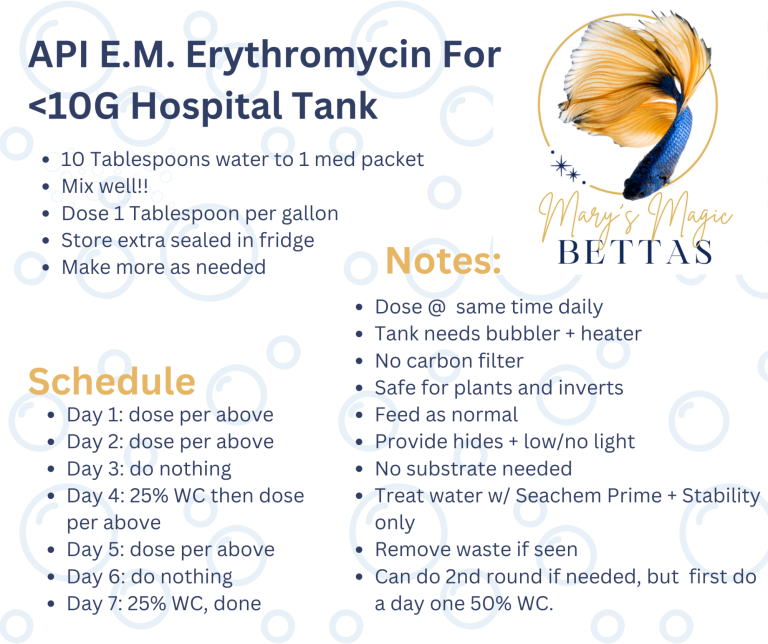
API E.M. Erythromycin
Medication Type: Broad Spectrum Antibiotic, heavily targets Gram Positive bacterial infections
Safe For:
- Plants? Yes
- Inverts? Yes
- Shrimp? Yes
Will it Crash Your Cycle? Yes. Hospital tank recommended.
Notes: Can administer second round if results not seen with gram negative bacterial or fungal treatments. Do not use for dropsy. Can be a good treatment to use as follow-up to other antibiotics if they alone didn't work, such as for internal infections or swim bladder disease.

API Fin & Body Cure
Medication Type: Broad Spectrum Antibiotic
Safe For:
- Plants? Yes
- Inverts? Yes
- Shrimp? Yes
Will it Crash Your Cycle? Yes. Hospital tank recommended.
Notes: Excellent at treating fin and body rot as well as internal organ damage from prolonged exposure to high ammonia and nitrite levels. Recommended use of hospital tank with no substrate, a heater, and an air stone. This medication decreases water oxygenation so air stone is required. Will turn water yellow.
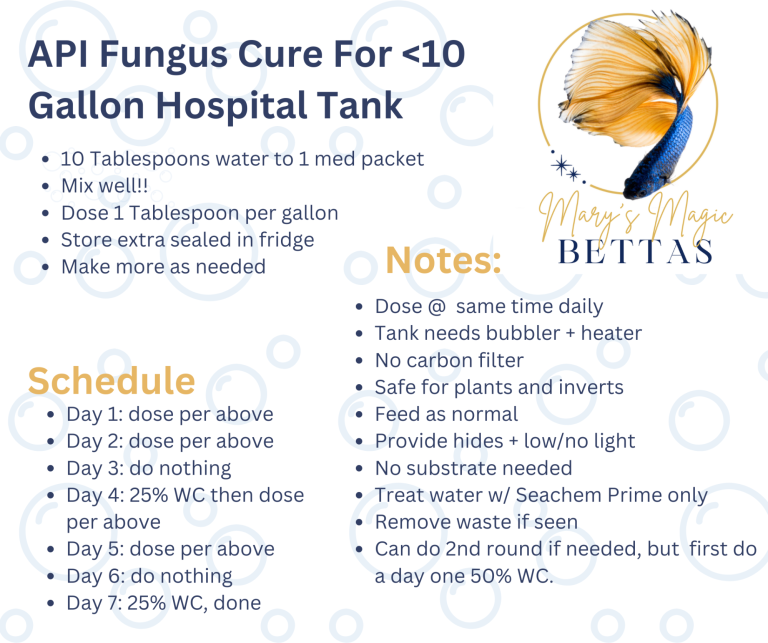
API Fungus Cure
Medication Type: Fungal Treatment and Antiseptic
Safe For:
- Plants? Yes
- Inverts? Yes
- Shrimp? Yes
Will it Crash Your Cycle? No
Notes: Will cause slight discoloration of water.

API General Cure
Medication Type: Broad spectrum antibiotic, fungal treatment, and anti parasitic (hexamita and cestodes, but not nematodes).
Safe For:
- Plants? Yes
- Inverts? Yes
- Shrimp? Yes
Will it Crash Your Cycle? Yes, hospital tank recommended.

API Super Ick Cure
Medication Type: Anti parasitic
Safe For:
- Plants? Yes
- Inverts? Yes
- Shrimp? No
Will it Crash Your Cycle? No
Notes: snail safe at half the dose, not shrimp safe, will discolor water, ornaments, and tubing.

Fritz Expel-P
Medication Type: Anti Parasitic
Safe For:
- Plants? Yes
- Inverts? Yes
- Shrimp? Yes
Will it Crash Your Cycle? No

Fritz or Mardel Coppersafe
Medication Type: Anti parasitic
Safe For:
- Plants? No
- Inverts? No
- Shrimp? No
Will it Crash Your Cycle? No
Notes: The long lasting formula only requires one dose to maintain a therapeutic level for up to one month in the aquarium.

Fritz ParaCleanse
Medication Type: Anti parasitic
Safe For:
- Plants? Yes
- Inverts? Yes
- Shrimp? Yes
Will it Crash Your Cycle? No

Malachite Green
Medication Type: anti-protozoal, anti-microbial, anti-fungal
Safe For:
- Plants? No
- Inverts? No
- Shrimp? No
Will it Crash Your Cycle? No
Notes: Safe for biological filter, can permanently discolor equipment and tank seals, recommended use of separate container.

Mardel Maracyn Oxy
Medication Type: Broad spectrum antibiotic, antifungal
Safe For:
- Plants? Yes
- Inverts? No
- Shrimp? No
Will it Crash Your Cycle? No

Mardel or Fritz Maracyn
Medication Type: Broad spectrum antibiotic (gram positive bacterial infections in particular)
Safe For:
- Plants? Yes
- Inverts? Yes
- Shrimp? Yes
Will it Crash Your Cycle? Yes, hospital tank recommended
Notes: Claims to treat fungus without an antifungal listed as an ingredient.

Mardel or Fritz Maracyn Two
Medication Type: Broad spectrum antibiotic (gram negative bacterial infections in particular)
Safe For:
- Plants? Yes
- Inverts? Yes
- Shrimp? Yes
Will it Crash Your Cycle? Yes, hospital tank recommended.
Notes: Good choice if Kanaplex isn't available. Also effective when used after a round of Kanaplex esp. for swim bladder and dropsy. Cannot be purchased on Amazon, but can be found on Chewy or eBay. Maracyn Two can is powerful and can be hard on the internal organs of a fish so use only in dire circumstances (as it can treat serious infections)

Methylene Blue
Medication Type: Anti-parasitic, superficial anti-fungal, antibacterial as a disinfectant (gam +, some gram -)
Safe For:
- Plants? No
- Inverts? No
- Shrimp? No
Will it Crash Your Cycle? Yes, hospital tank recommended
Notes: Not plant or biological filter friendly, caution with invertebrates, cannot be used with erythromycin, can permanently discolor equipment and tank seals so must be used in a separate container as a dip
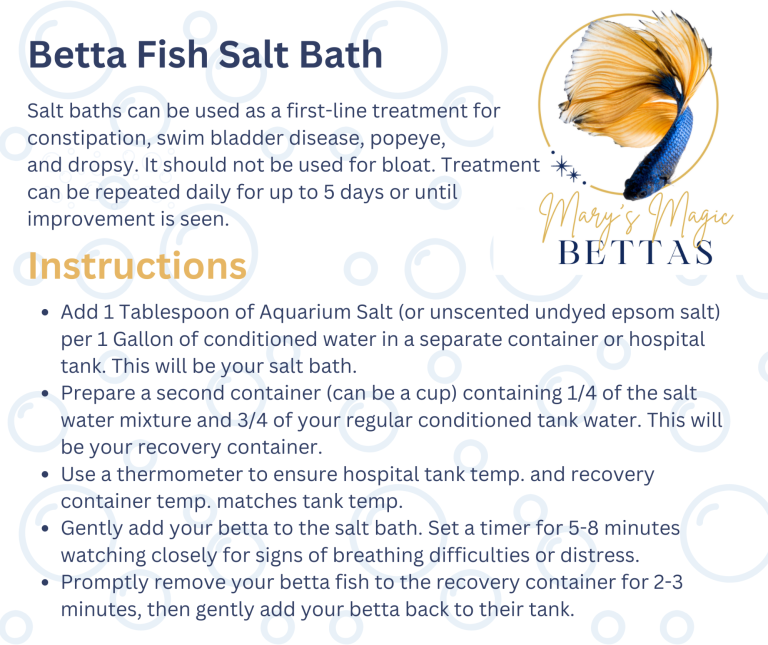
Saltwater Dip / Bath
Medication Type: N/A
Instructions for use: See image above
Safe For:
- Plants? N/A, use hospital tank
- Inverts? N/A, use hospital tank
- Shrimp? N/A, use hospital tank
Will it Crash Your Cycle? N/A, use hospital tank
Notes: Add 1 Tablespoon of Aquarium Salt (or unscented undyed epsom salt) per 1 Gallon of conditioned water in a separate container or hospital tank. This will be your salt bath. Prepare a second container (can be a cup) containing 1/4 of the salt water mixture and 3/4 of your regular conditioned tank water. This will be your recovery container. Use a thermometer to ensure hospital tank temp. and recovery container temp. matches tank temp. Gently add your betta to the salt bath. Set a timer for 5-8 minutes watching closely for signs of breathing difficulties or distress. Promptly remove your betta fish to the recovery container for 2-3 minutes, then gently add your betta back to their tank.
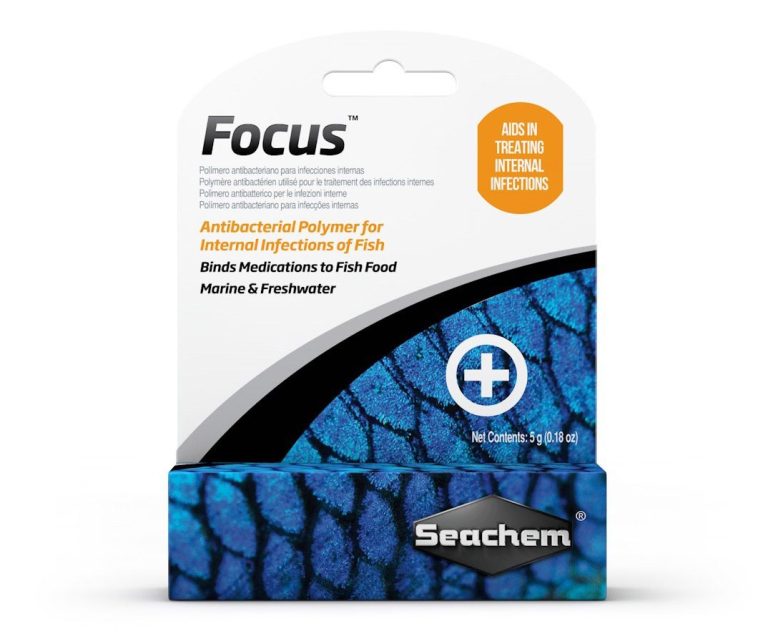
Seachem Focus
Medication Type: antibiotic, anti-fungal
Safe For:
- Plants? Yes*
- Inverts? Yes
- Shrimp? Yes
Will it Crash Your Cycle? Yes
Notes: *Plant safe when mixed with food Use alone or mixed with other medications to make them palatable to fish and greatly reduce the loss of medication to the water through diffusion

Seachem Kanaplex
Medication Type: Broad Spectrum Antibiotic + Antifungal
Safe For:
- Plants? No
- Inverts? No
- Shrimp? No
Will it Crash Your Cycle? Yes
Notes: Most effective in higher pH, can cause kidney damage if over used.

Seachem Metroplex
Medication Type: Anti parasitic
Safe For:
- Plants? Yes*
- Inverts? Yes*
- Shrimp? Yes*
Will it Crash Your Cycle? No
Notes: Stressful to plants and invertabrates so not recommended, but can be used.
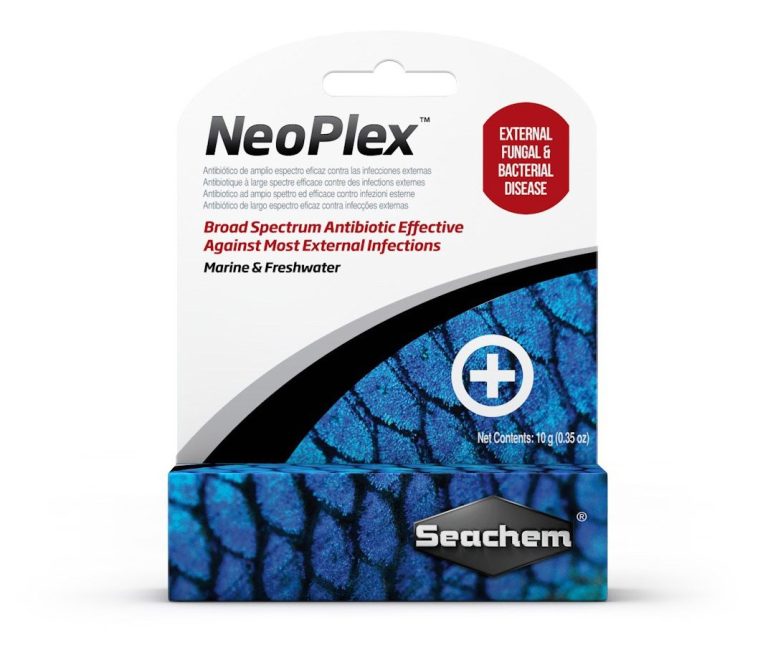
Seachem Neoplex
Medication Type: Broad spectrum antibiotic
Safe For:
- Plants? Yes
- Inverts? Yes
- Shrimp? Yes
Will it Crash Your Cycle? No* (hospital tank still recommended)
Notes: Plant and invertebrate friendly only if used as medicated food mix. May kill some beneficial bacteria, has minimal impact for an antibiotic.
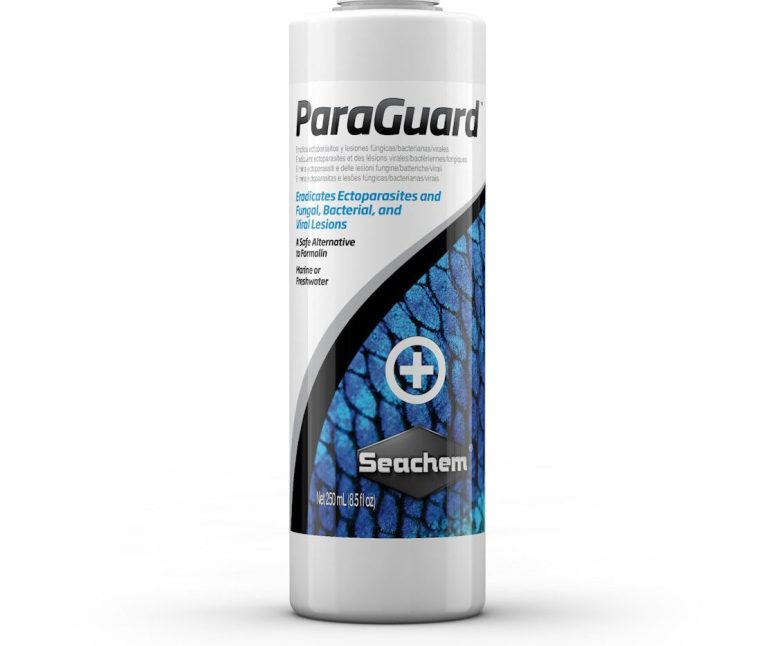
Seachem Paraguard
Medication Type: Anti microbial, anti parasitic, anti bacterial
Safe For:
- Plants? Yes*
- Inverts? Yes*
- Shrimp? Yes*
Will it Crash Your Cycle? No, hospital tank still recommended.
Notes: often used in hospital tank before introducing fish to community tank. Dose at half or quarter strength if not using hospital tanks to test if plants and inverts can tolerate.

Seachem Polyguard
Medication Type: Gram - and Gram + antibiotic, antifungal, antiparasitic (external parasites only, not internal).
Safe For:
- Plants? No
- Inverts? No
- Shrimp? No
Will it Crash Your Cycle? Yes, hospital tank recommended
Notes: Strong antibiotic, stressful and should not be used with plants and invertebrates. Should only be used on a fish with multiple unknown issues so you can cover a lot of ground at once.

Seachem Sulfaplex
Medication Type: antibiotic, anti-fungal
Safe For:
- Plants? No
- Inverts? No
- Shrimp? No
Will it Crash Your Cycle? Yes, hospital tank recommended
We need your consent to load the translations
We use a third-party service to translate the website content that may collect data about your activity. Please review the details in the privacy policy and accept the service to view the translations.


